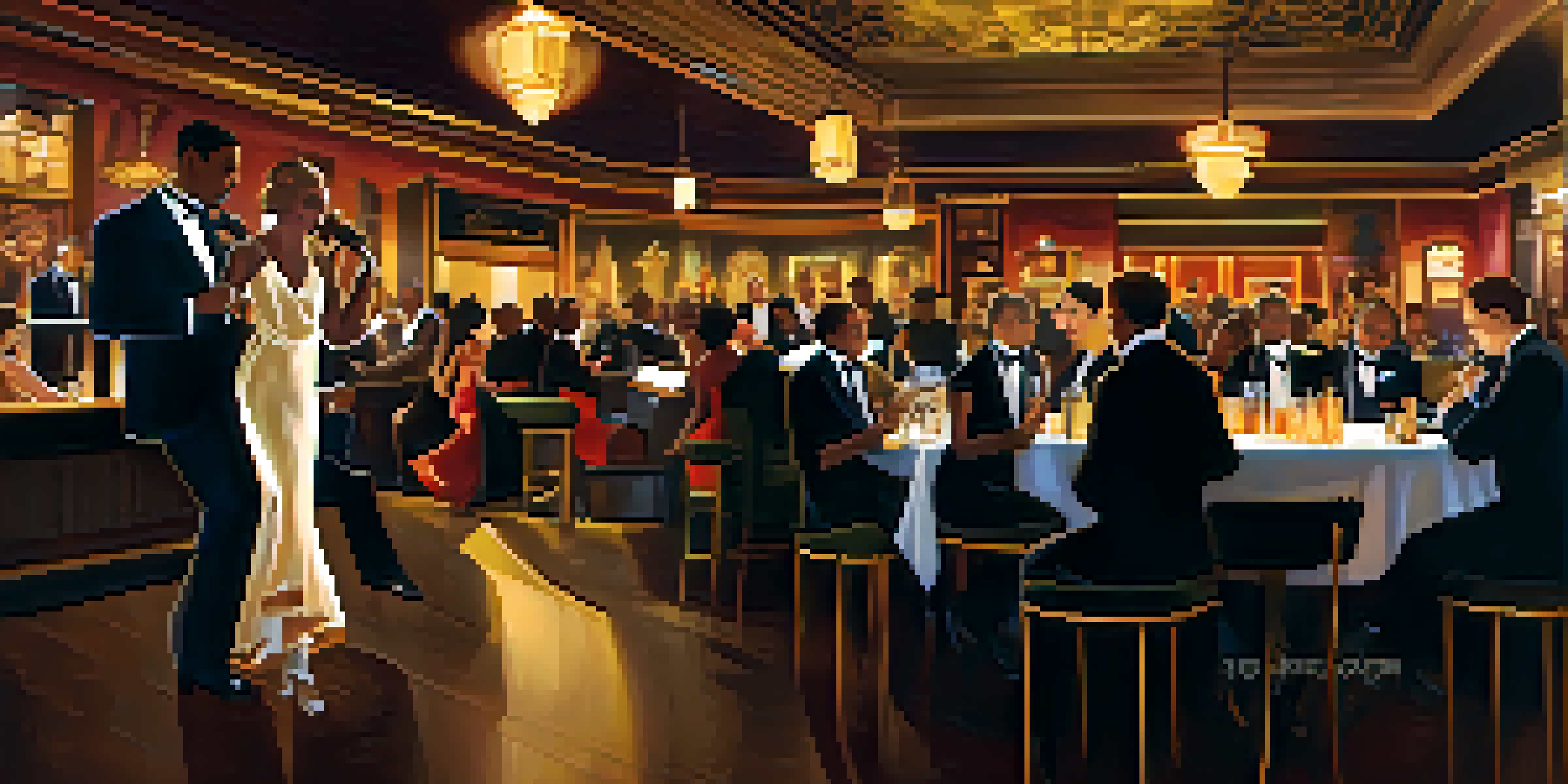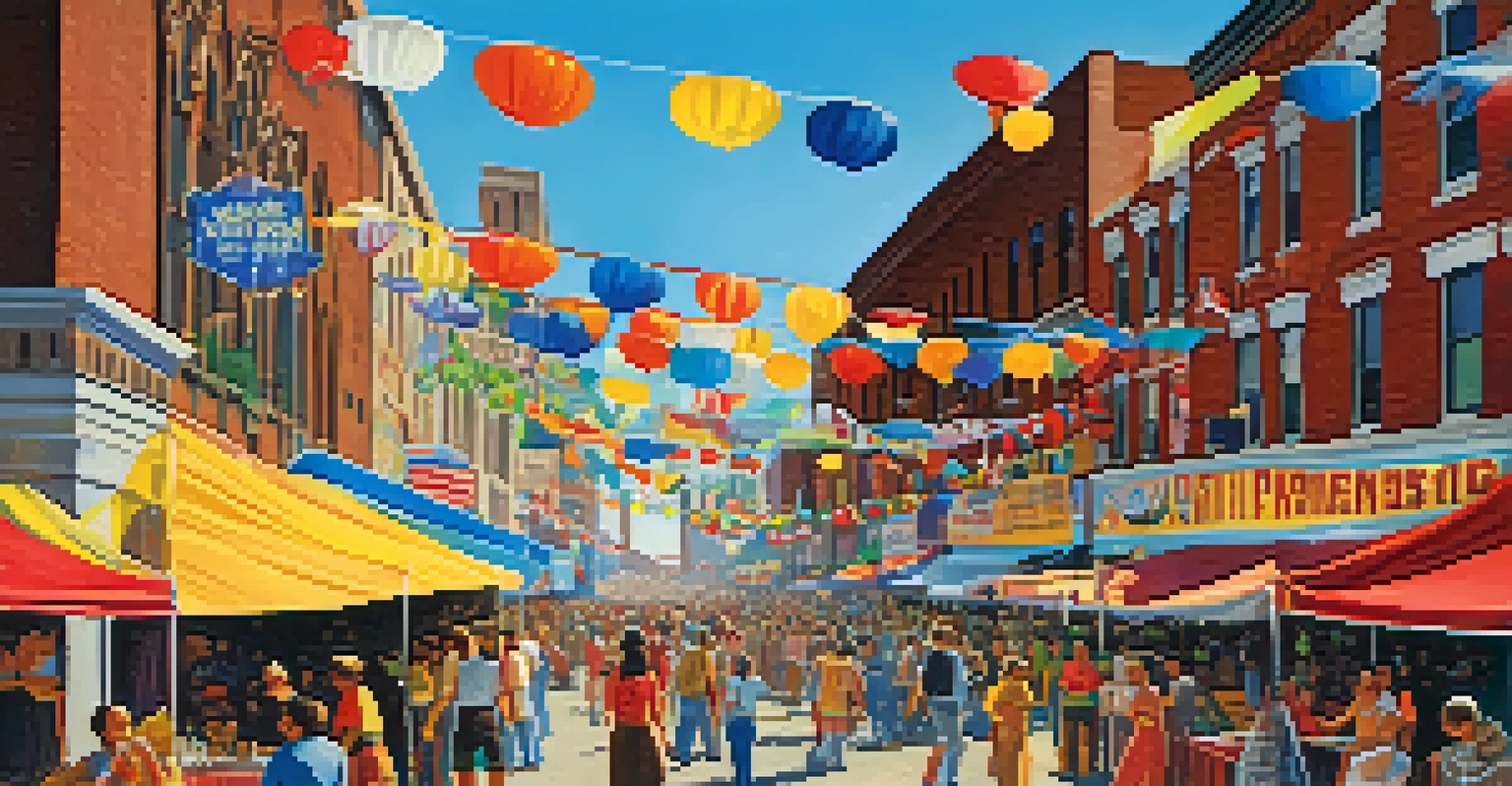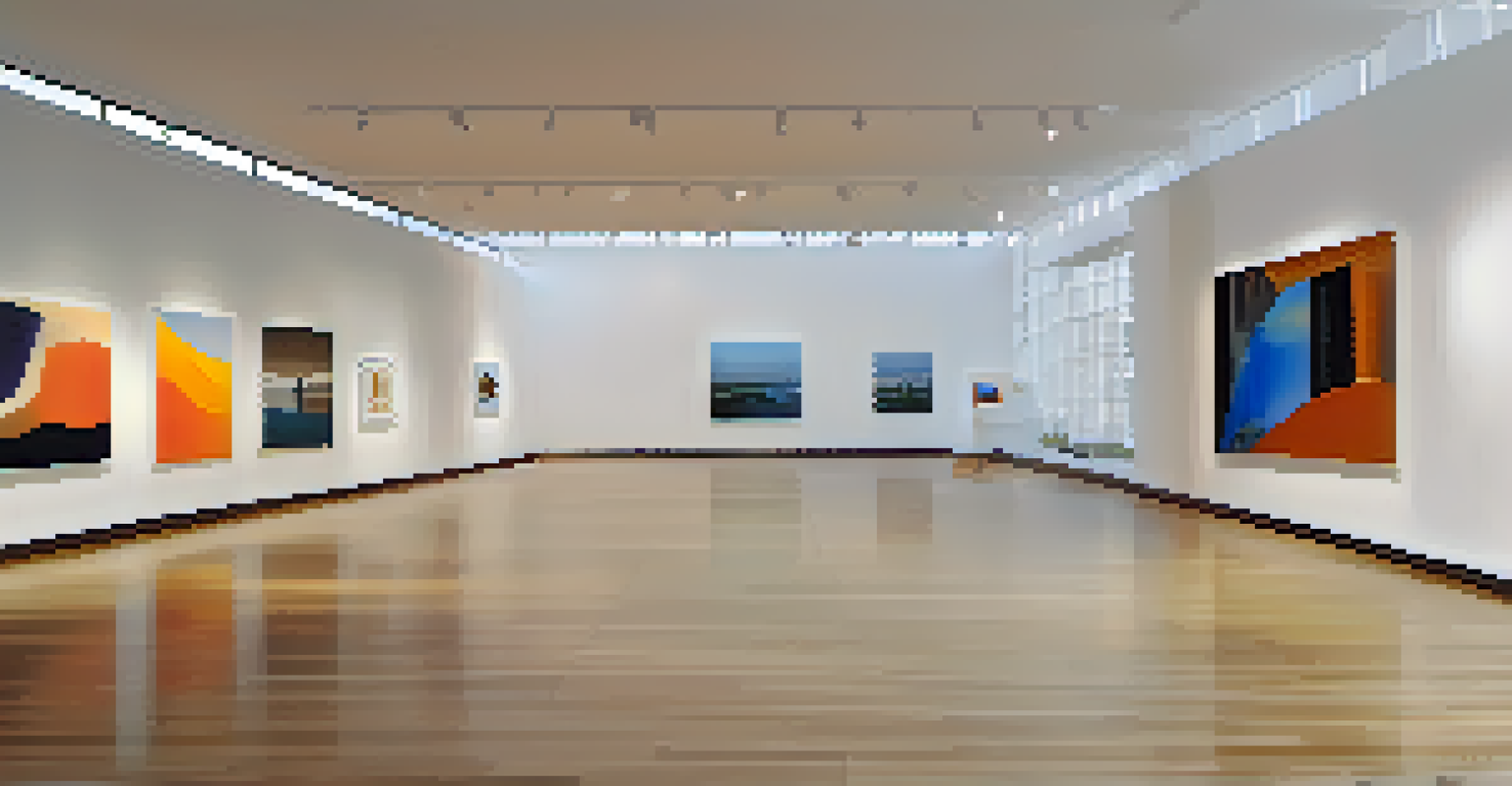Cultural Evolution: St. Louis Through the Decades

The Roaring Twenties: A Cultural Renaissance
The 1920s marked a thrilling era for St. Louis, often dubbed the 'Gateway to the West.' Jazz music flourished, with nightclubs and speakeasies popping up across the city, showcasing local talent and attracting visitors.
The arts are the magic of life. They can transform the ordinary into the extraordinary.
This period also saw significant architectural developments, with the construction of iconic structures like the Municipal Auditorium. These buildings not only served functional purposes but also became symbols of the city’s ambition and artistic aspirations.
The cultural landscape was vibrant, with art exhibitions and theater performances captivating audiences. This lively atmosphere set the stage for generations to appreciate the arts in St. Louis.
The Great Depression: Resilience Through Hardship
As the 1930s rolled in, the Great Depression swept across the nation, and St. Louis felt its impact profoundly. Many families struggled to make ends meet, yet the community showcased resilience through innovative solutions.

During this time, local artists and musicians often performed for free in public spaces, fostering a sense of unity and hope. The spirit of St. Louisans shone through as they turned to their cultural roots for comfort and inspiration.
St. Louis: A Cultural Renaissance
The 1920s saw St. Louis thrive with jazz music, architectural growth, and a vibrant arts scene.
The decade was also marked by the establishment of social programs aimed at supporting the arts, which played a crucial role in keeping the city’s cultural scene alive during tough times.
The Post-War Boom: A Flourishing Arts Scene
The 1950s heralded a new era of prosperity in St. Louis, with the post-war boom igniting a surge in creativity. The city became a canvas for artists, musicians, and writers eager to express their experiences and emotions.
Art is not freedom from discipline, but disciplined freedom.
As television and radio gained popularity, local talents began to gain national recognition, bringing St. Louis culture into homes across America. This newfound exposure helped establish the city as a cultural hub.
Communities rallied around art fairs and festivals, celebrating local talent and fostering a sense of pride. The decade solidified St. Louis’s reputation as a place where culture thrived.
The 1960s: A Decade of Change and Activism
The 1960s were a transformative time in St. Louis, as social movements gained momentum amid a backdrop of cultural upheaval. The city became a focal point for civil rights activism, with local leaders advocating for equality and justice.
Art and music flourished as a form of protest, with local artists using their platforms to address social issues. The emergence of folk music and rock 'n' roll resonated deeply with the younger generation, sparking a cultural revolution.
Resilience During the Great Depression
Despite economic hardship in the 1930s, St. Louisans showcased resilience through community art and social programs.
This decade saw the establishment of new art institutions, reflecting the community's commitment to fostering dialogue about social change through creativity.
The 1970s: Embracing Diversity and New Voices
In the 1970s, St. Louis witnessed a vibrant tapestry of cultures, with diverse communities contributing to the city’s cultural fabric. This decade marked a significant shift towards inclusivity, as marginalized voices began to emerge.
Festivals celebrating different cultures became commonplace, showcasing the rich heritage of St. Louisans. Events like the Festival of Nations highlighted the city's multiculturalism and fostered a sense of belonging.
This era also saw the growth of local art movements, with artists exploring various mediums and styles, further enriching the cultural landscape of St. Louis.
The 1980s: A Technological and Artistic Revolution
The 1980s brought technological advancements that transformed the artistic scene in St. Louis. The rise of digital media opened new avenues for artists to experiment and reach wider audiences.
Local galleries and theaters began to incorporate technology into their presentations, making art more accessible and engaging. This innovation created a dynamic environment where traditional and contemporary art coexisted.
Evolving Cultural Landscape Today
From the 1990s to the present, St. Louis has become a cultural hub, fostering diverse voices and artistic innovation.
As St. Louisans embraced these changes, a new generation of artists emerged, eager to push boundaries and redefine cultural expression in the city.
The 1990s to Present: A Cultural Hub for All
From the 1990s to today, St. Louis has solidified its status as a cultural hub, attracting artists and performers from various backgrounds. The city's commitment to fostering the arts has led to the establishment of numerous festivals, galleries, and cultural institutions.
The revitalization of neighborhoods has also played a significant role, with art districts emerging as gathering places for creativity and collaboration. These vibrant areas have become essential to the city’s identity.

As we look to the future, St. Louis continues to evolve, embracing its rich history while encouraging new voices and ideas to shape the cultural landscape.